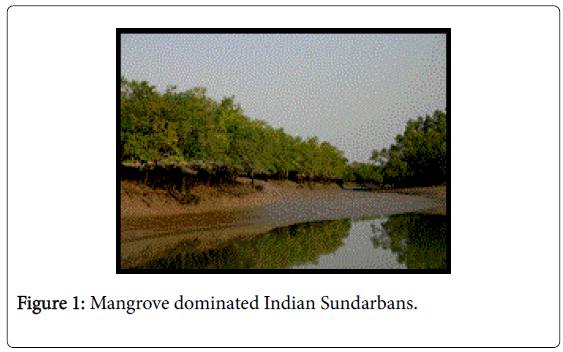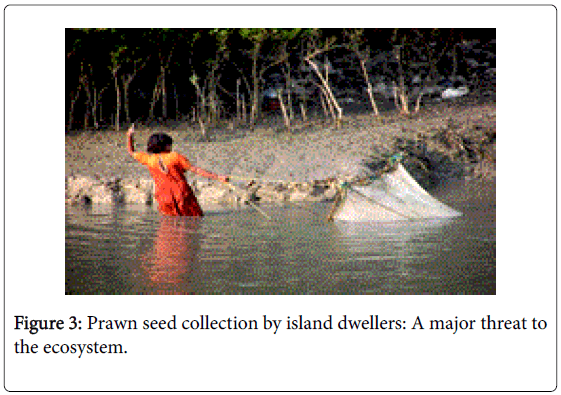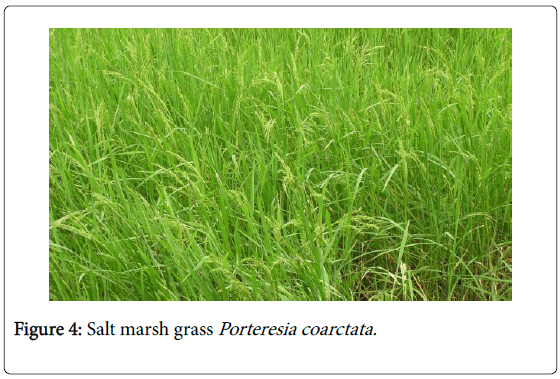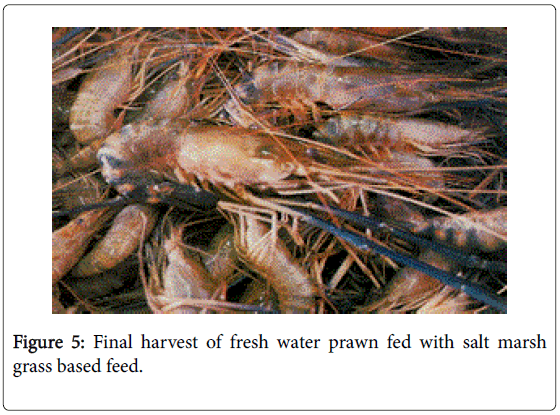Editorial Open Access
Adaptation to Climate Change through Mangrove-Centric Livelihood
Goutam Roy Chowdhury1 and Abhijit Mitra2*1Chancellor, Techno India University, India
2Department of Marine Science, University of Calcutta, India
- Corresponding Author:
- Abhijit Mitra
Faculty Member, Department of Marine Science
University of Calcutta, West Bengal, India
Tel: +919831269550
E-mail: abhijit_mitra@hotmail.com
Received Date: March 18, 2017; Accepted Date: March 21, 2017; Published Date: March 26, 2017
Citation: Chowdhury GR, Mitra A (2017) Adaptation to Climate Change through Mangrove-Centric Livelihood. J Marine Sci Res Dev 7:e145. doi:10.4172/2155-9910.1000e145
Copyright: © 2017 Chowdhury GR, et al. This is an open-access article distributed under the terms of the Creative Commons Attribution License, which permits unrestricted use, distribution, and reproduction in any medium, provided the original author and source are credited.
Visit for more related articles at Journal of Marine Science: Research & Development
Abstract
Climate change is a bitter truth of the present era . The issue is also taken up during US presidential election with priority. Seminars are arranged both at the National and International levels with great pomp and splendor. Heated debate occurs between the nations to fix the upper limit of atmospheric temperature.
Keywords
Indian Sundarbans; Salt marsh grass; Prawn feed; Alternative livelihood
Editorial
Climate change is a bitter truth of the present era . The issue is also taken up during US presidential election with priority. Seminars are arranged both at the National and International levels with great pomp and splendor. Heated debate occurs between the nations to fix the upper limit of atmospheric temperature. The heat of these debates, the outcome of these hot conversations or the resolutions taken by the nation leaders/representatives cannot touch the poor villagers of Dayapur or Chotomollakahli, which are dominated by mangrove vegetation’s, tiger, crocodiles, deer and many other wild fauna [1-3].
These villages are not spotted in the world map, neither the livelihood of the villagers appear on the surface of knowledge due to their location in the remote part of the world, the place known as Indian Sundarbans in the lower Gangetic delta. Bidhan Mondol, a son of this mangrove soil was a poacher, but after witnessing the cruel clutches of AILA (a super cyclone that hit the region in May 2009) now thinks to shift to a new livelihood pattern. Like Bidhan, a large fraction of the people of these islands are thinking to accept new livelihood schemes like home tourism, apiculture, or fish feed preparation from mangrove flora.
It is in this context a study was undertaken by Techno India University, West Bengal at Jharkhali in the central part of Indian Sundarbans during 2015 to find the role of specially formulated feed prepared from Porteresia coarctata (commonly known as salt marsh grass) to boost up the growth of fresh water prawn, Macrobrachium rosenbergii. This mangrove associate species commonly covers the mudflats of Indian Sundarbans and has considerable protein content. Dried powder of this floral species was mixed with the prawn feed as a source of protein [4-6].
The programme was undertaken as a part of adaptation to climate change in this part of the world where the sea level rise is some 3.14 mm/year. The culture of prawn was undertaken for a period of 8 months and this mangrove-centric livelihood venture witnessed a profit after the completion of the pilot project (Table 1).
| Items | Control Pond (Area=500m2) | Experimental Pond (Area=500m2) | |
|---|---|---|---|
| Cost | Number of prawn fry | 2500 | 3250 |
| Prawn fry cost (in INR) | 1000 | 1300 | |
| Feed quantity (in kg.) | 336.9 | 571.35 | |
| Feed cost (in INR) | 13476 | 14283.75 | |
| Experimental cost | 6000 | 6000 | |
| Labor/management cost | 2000 | 2000 | |
| Total cost (in INR.) | 25312.9 | 27405.1 | |
| Total unit cost (in INR/m2) | 50.63 | 42.16 | |
| Benefit | Production return (in kg.) | 104 | 156 |
| Economic return (@ INR 350/kg) | 36400 | 54600 | |
| Expenditure (in INR) | 25312.9 | 27405.1 | |
| Total Profit/pond (in INR) | 11087.1 | 27194.9 | |
| Profit/unit area (in INR/m2) | 22.17 | 41.84 |
Table 1: Cost-Benefit Analysis of the project. Note: INR stands for Indian Rupees.
The Sundarban mangrove region is noted for rich biodiversity and has been declared as World Heritage Site, but the ground-zero observation is alarming. Poaching, erosion, tidal surges, massive wave actions, frequent cyclones, pollution, salinity alterations are the major hurdles in the matrix of conservation. Lack of organized Institution based approach has aggravated the magnitude of threat in this fragile ecosystem (Figures 1-5). The present programme has immense ecological and economic relevance in connection to these issues in the following ways:
Utilization of only the freshwater system (ponds, ditches, rain water harvested canals etc.) and therefore clearance of mangrove areas for the culture of Penaeus monodon (shrimp) may be totally avoided [7-9].
Involvement of the local people in organic fish feed cottage industry. Economic upliftment of the local people.
Conflict of Interest
There is no conflict of interest in context to the present documentation.
Acknowledgement
The authors are thankful to Techno India University, West Bengal for providing the infrastructural facilities and financial support. Ms. Nilaparna Guha Roy, Ishan Ghosh of administration and beloved Kaku of TIU are gratefully acknowledged for providing all the supports required for this study. We are also thankful to Prof. (Dr.) Sujoy Biswas and Mr. Anit Adhikary for streamlining the research team of TIU to fulfill the GRC VISION 2025.
References
- Banerjee K, Sengupta K, Raha AK, Mitra A (2013) Salinity based allometric equations for biomass estimation of Sundarban mangroves. Biomass & Bioenergy56: 382-391.
- Mitra A (2013) In: Sensitivity of Mangrove Ecosystem to changing Climate. Springer p: 323.
- Mitra A, Zaman S (2014) Carbon Sequestration by Coastal Floral Community; published by The Energy and Resources Institute (TERI) TERI Press, India, ISBN 978-81-7993-551-4.
- Mitra A, Zaman S (2015) Blue carbon reservoir of the blue planet, Springer, ISBN 978-81-322-2106-7.
- Mitra A, Zaman S (2016) Basics of Marine and Estuarine Ecology, Springer, ISBN 978-81-322-2705-2.
- Mitra A, Banerjee K, Sinha S(2011) Shrimp tissue quality in the lower Gangetic delta at the apex of Bay of Bengal. Toxicolo and Environ Chem 93: 565-574.
- Mitra A, Gangopadhyay A, Dube A, Schmidt ACK, Banerjee K (2009) Observed changes in water mass properties in the Indian Sundarbans (Northwestern Bay of Bengal) during 1980 - 2007. Current Sci :1445-1452.
- Raha AK, Bhattacharyya SB, Zaman S, Banerjee K, Sengupta K,et al. (2013) Carbon census in dominant mangroves of Indian Sundarbans. The Journal of Energy and Environmental Science (Photon) 127: 345-354.
- Trivedi S, Zaman S, Ray Chaudhuri T, Pramanick P, Fazli P, et al. (2016) Inter-annual variation of salinity in Indian Sundarbans. Indian J of Geo-Marine Sci 45: 410-415.
Relevant Topics
- Algal Blooms
- Blue Carbon Sequestration
- Brackish Water
- Catfish
- Coral Bleaching
- Coral Reefs
- Deep Sea Fish
- Deep Sea Mining
- Ichthyoplankton
- Mangrove Ecosystem
- Marine Engineering
- Marine Fisheries
- Marine Mammal Research
- Marine Microbiome Analysis
- Marine Pollution
- Marine Reptiles
- Marine Science
- Ocean Currents
- Photoendosymbiosis
- Reef Biology
- Sea Food
- Sea Grass
- Sea Transportation
- Seaweed
Recommended Journals
Article Tools
Article Usage
- Total views: 4718
- [From(publication date):
April-2017 - Mar 31, 2025] - Breakdown by view type
- HTML page views : 3828
- PDF downloads : 890





